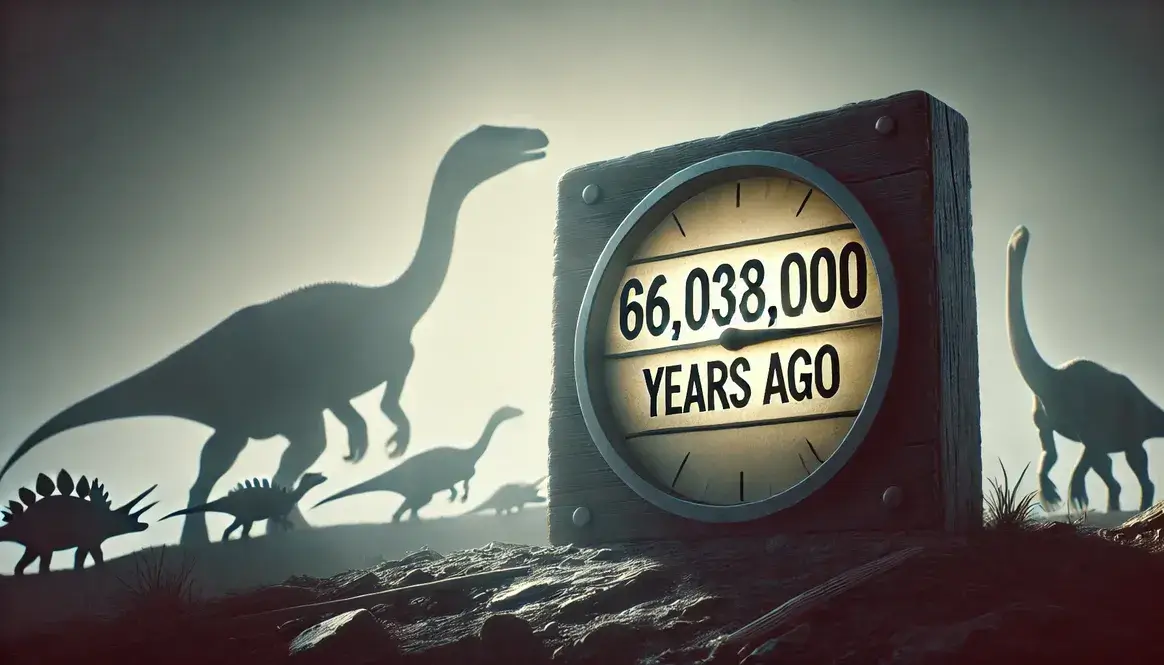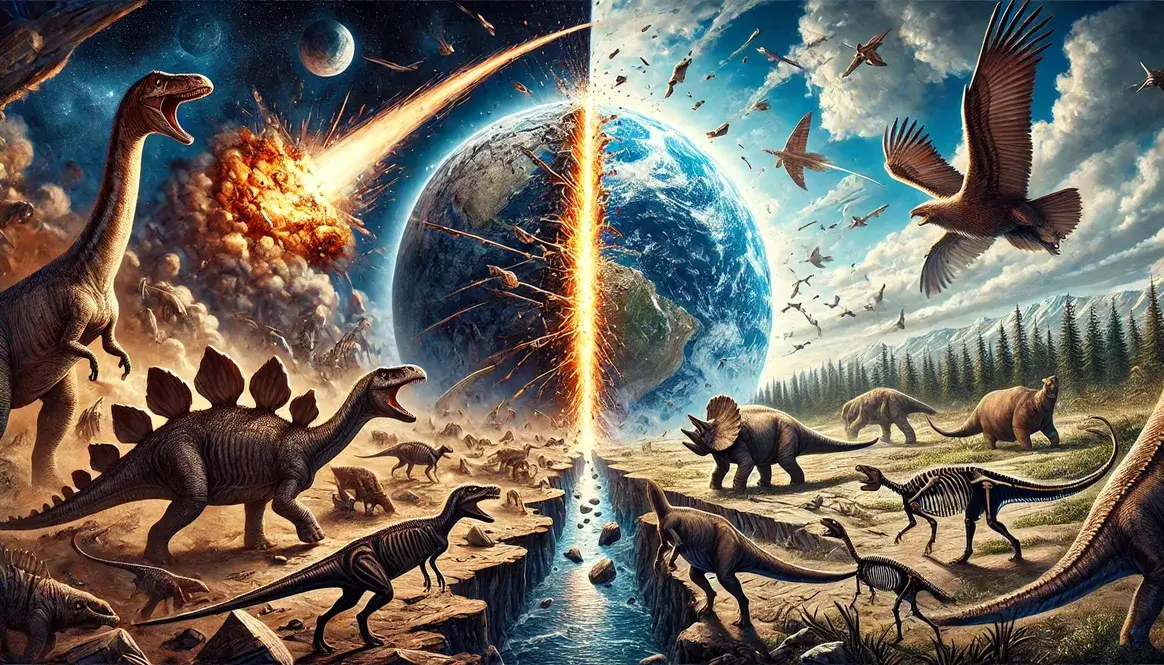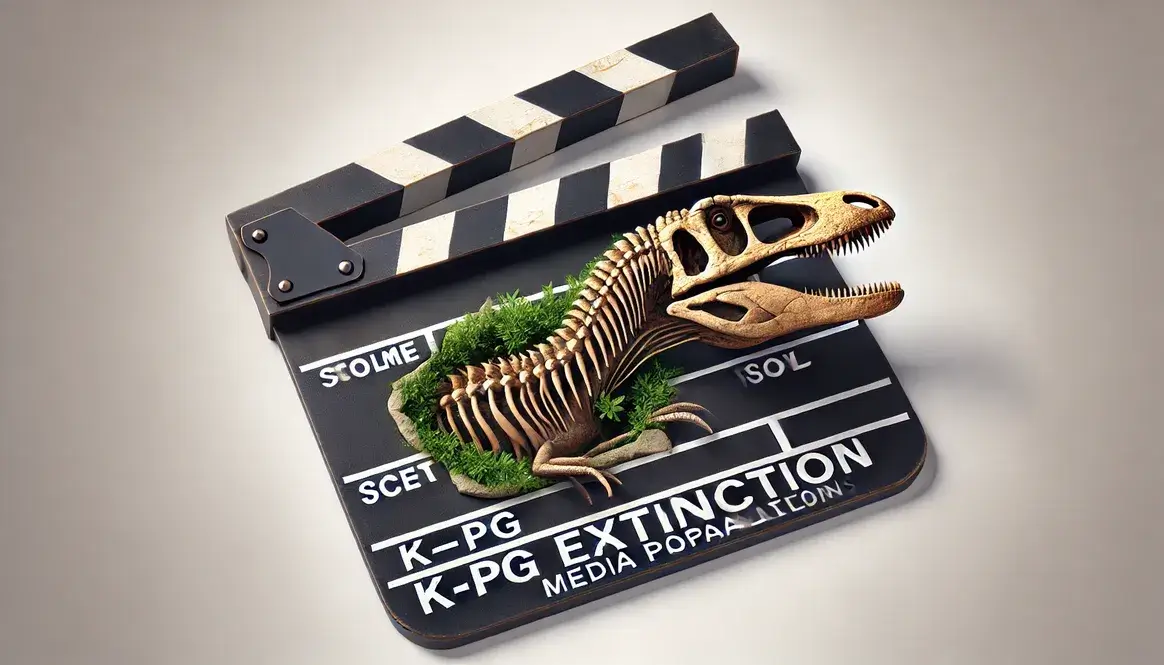The Precise Date of the K-Pg Event
When did the K-Pg extinction happen? The Cretaceous-Paleogene (K-Pg) extinction event, which wiped out the non-avian dinosaurs and many other species, occurred approximately 66 million years ago. But scientists have narrowed down this massive event to a much more specific timeframe.
The Specific Day and Year
Believe it or not, researchers have pinpointed the K-Pg extinction to a particular season and even a specific day! According to the most recent studies, the extinction event likely happened in the northern hemisphere spring, around 66,038,000 years ago. Some scientists have even suggested the exact date of April 13th, give or take a few days.
Here’s a quick breakdown of the timing:
| Time Period | Date |
|---|---|
| Year | ~66,038,000 years ago |
| Season | Northern hemisphere spring |
| Possible specific date | April 13th (± a few days) |
This level of precision might seem surprising for an event that happened so long ago. But it’s the result of some seriously clever scientific detective work!
Margin of Error in Dating
While the date seems incredibly precise, it’s important to remember that there’s still a margin of error. When we’re dealing with millions of years, even the most accurate dating methods have some uncertainty.
The current margin of error for the K-Pg extinction date is about ±11,000 years. This means the actual date could be up to 11,000 years earlier or later than the 66,038,000 years ago estimate.
To put this in perspective:
| Total time since K-Pg extinction | Margin of error |
|---|---|
| ~66,038,000 years | ±11,000 years |
While 11,000 years might seem like a lot, it’s actually incredibly precise when we’re talking about events from tens of millions of years ago. It’s like trying to pinpoint a single second in a 24-hour day!
The specific day (April 13th) is even less certain and is based on assumptions about the Earth’s rotation rate millions of years ago. But it gives us a tantalizing glimpse into that fateful moment when the age of dinosaurs came to an end.
This precise dating helps scientists understand not just when the extinction happened, but also how quickly it unfolded and what its immediate effects were. It’s a crucial piece of the puzzle in understanding one of the most significant events in Earth’s history.
Dating Methods for the K-Pg Extinction
Scientists have developed several sophisticated techniques to determine when the K-Pg extinction happened. These methods allow researchers to peer back in time with remarkable accuracy.
Radiometric Dating Techniques
Radiometric dating is the primary tool scientists use to determine the age of K-Pg boundary rocks. This method relies on the predictable decay of radioactive isotopes found in minerals.
Here’s how it works:
- Scientists identify specific radioactive isotopes in rock samples.
- They measure the ratio of the original isotope to its decay products.
- Using known decay rates, they calculate how long it took for that much decay to occur.
This process gives us a reliable estimate of when the rock formed or, in the case of the K-Pg boundary, when the extinction event occurred.
Argon-Argon Dating
Argon-Argon (40Ar/39Ar) dating is a refined version of radiometric dating that’s particularly useful for the K-Pg boundary. It’s based on the decay of potassium-40 to argon-40.
This method is preferred because:
- It’s highly accurate for rocks formed 50-500 million years ago
- It can be used on very small samples
- It’s less affected by sample contamination than other methods
To date K-Pg boundary samples, scientists often use tiny glass spherules formed from rock vaporized by the asteroid impact. These spherules are found worldwide in the K-Pg boundary layer and provide a direct link to the extinction event.
Other Dating Methods
While radiometric dating is the gold standard, scientists use other techniques to corroborate and refine their findings:
- Magnetostratigraphy: This method uses the Earth’s magnetic field reversals recorded in rocks to determine age. The K-Pg boundary coincides with a specific magnetic reversal, providing an independent check on radiometric dates.
- Biostratigraphy: By studying the evolution and extinction of fossil species, scientists can bracket the K-Pg event. This method helps confirm the rapid nature of the extinction.
- Cyclostratigraphy: This technique analyzes cyclical patterns in rock layers caused by regular changes in Earth’s orbit. It can provide high-resolution dating within the broader radiometric framework.
| Dating Method | Key Advantage |
|---|---|
| Radiometric | High accuracy for millions of years |
| Magnetostratigraphy | Independent check on radiometric dates |
| Biostratigraphy | Confirms rapid nature of extinction |
| Cyclostratigraphy | High-resolution dating within broader timeframe |
By combining these methods, scientists can piece together a detailed timeline of the K-Pg extinction. This multi-pronged approach ensures that our understanding of when this crucial event occurred is as accurate as possible.
The Duration of the K-Pg Extinction
While we’ve pinpointed when the K-Pg extinction happened, determining how long it took is another matter entirely. This question has sparked intense debate among scientists, leading to fascinating research and discoveries.
Rapid vs. Gradual Extinction Debate
The scientific community has long been divided over whether the K-Pg extinction was a sudden, catastrophic event or a more gradual process. This debate centers around two main scenarios:
- Rapid Extinction: A sudden, global catastrophe caused by the asteroid impact, leading to mass die-offs within a very short time.
- Gradual Decline: A more extended period of environmental stress, possibly exacerbated by the impact, causing species to die out over thousands or even millions of years.
Both sides have compelling arguments, and the truth may lie somewhere in between. Let’s explore the evidence for each perspective.
Evidence for a Rapid Extinction
Recent research strongly supports the idea of a rapid extinction event. Here are some key pieces of evidence:
- Iridium Layer: A thin, global layer of iridium-rich clay marks the K-Pg boundary. This layer, deposited rapidly after the asteroid impact, suggests a sudden, worldwide event.
- Fossil Record: The abrupt disappearance of many species in the fossil record, with no gradual decline beforehand, points to a rapid extinction.
- Impact Spherules: Tiny glass beads formed from vaporized rock are found globally in the K-Pg boundary layer, indicating a massive, sudden impact event.
These findings suggest that the main extinction event happened extremely quickly—possibly within hours or days of the asteroid’s devastating collision.
Potential Longer-Term Effects
While the initial extinction may have been rapid, its effects likely lingered for thousands of years. Some longer-term impacts include:
- Global Cooling: Dust and aerosols from the impact blocked sunlight, causing a prolonged period of global cooling.
- Acid Rain: Sulfur-rich rocks vaporized by the impact led to acid rain, affecting terrestrial and marine ecosystems.
- Carbon Cycle Disruption: Mass die-offs of plants and phytoplankton disrupted the global carbon cycle, potentially for thousands of years.
This table summarizes the timescales involved:
| Event | Timescale |
|---|---|
| Initial impact and extinctions | Hours to days |
| Global firestorms | Days to weeks |
| Impact winter | Years to decades |
| Ecosystem recovery | Thousands to millions of years |
While the K-Pg extinction happened rapidly in geological terms, its repercussions echoed through Earth’s ecosystems for millennia. The planet’s biosphere took millions of years to fully recover, setting the stage for the rise of mammals and eventually, humans.
Understanding the duration and effects of this extinction event provides crucial insights into how life on Earth responds to global catastrophes, offering valuable lessons for our modern world.
Geological Context of the K-Pg Extinction
To truly understand when the K-Pg extinction happened, we need to paint a picture of Earth as it was 66 million years ago. The world on the eve of this cataclysmic event was both familiar and alien compared to our modern planet.
Late Cretaceous Climate and Geography
The Late Cretaceous Earth was a greenhouse world, much warmer than today. This warm climate supported lush vegetation and diverse ecosystems across the globe. Some key features of this period include:
- Higher sea levels: Much of today’s land was underwater, creating vast shallow seas.
- No polar ice caps: The poles were free of ice and supported temperate forests.
- Different continental arrangement: The continents were in different positions, affecting global climate patterns.
The supercontinent Pangaea had already begun to break apart, but the continents were still closer together than they are today. This geography played a crucial role in how life evolved and how the extinction event unfolded.
The K-Pg Boundary Layer
The K-Pg boundary layer is a thin but distinctive geological feature that marks the moment of the extinction event. This layer is found in rock formations worldwide and contains several telltale characteristics:
- Iridium anomaly: A high concentration of iridium, an element rare on Earth but common in asteroids.
- Shocked quartz: Quartz grains showing signs of intense pressure, indicative of a massive impact.
- Soot particles: Evidence of global wildfires triggered by the impact.
- Fossil changes: A sudden shift in fossil types above and below the boundary.
This boundary layer is crucial for understanding when dinosaurs went extinct and provides a global timestamp for the event.
Global Distribution of K-Pg Evidence
Evidence of the K-Pg extinction has been found on every continent, highlighting the truly global nature of this event. Some notable locations include:
| Location | Key Evidence |
|---|---|
| Chicxulub, Mexico | Impact crater |
| Hell Creek, Montana | Fossil-rich K-Pg boundary deposits |
| Stevns Klint, Denmark | Classic K-Pg boundary exposure |
| Seymour Island, Antarctica | Southern hemisphere K-Pg records |
Each of these sites contributes unique pieces to the puzzle of when and how the K-Pg extinction occurred. For example, the Chicxulub crater in Mexico provides direct evidence of the impact, while fossil beds in Montana show the abrupt change in life forms across the boundary.
The global distribution of K-Pg evidence allows scientists to study how the extinction affected different parts of the world. It also helps confirm the timing of the event, as the boundary layer appears at the same point in the geological record worldwide.
By studying these diverse locations, researchers can piece together a global picture of the extinction event, from the moment of impact through its far-reaching consequences. This worldwide perspective is crucial for understanding not just when the K-Pg extinction happened, but also its profound impact on the course of life on Earth.
Significance of the K-Pg Extinction Timing
Knowing precisely when the K-Pg extinction happened isn’t just about pinpointing a date on a prehistoric calendar. The timing of this event has far-reaching implications for our understanding of life’s history on Earth and even our approach to modern conservation efforts.
Impact on Evolution and Biodiversity
The exact timing of the K-Pg extinction played a crucial role in shaping the course of evolution. Here’s why:
- Seasonal Timing: The extinction’s occurrence in spring (in the Northern Hemisphere) had significant consequences. Many animals would have been in vulnerable stages of their life cycles, such as nesting or caring for young.
- Ecological Vacancies: The rapid extinction of dominant species created ecological niches that surviving organisms could quickly fill. This led to an explosion of new life forms in the aftermath.
- Evolutionary Bottlenecks: The timing forced rapid adaptations in surviving species, leading to accelerated evolution in some lineages.
The timing of the extinction event also influenced which species survived. For example, animals that hibernated or could estivate (enter a dormant state during hot or dry periods) had a better chance of survival if the extinction occurred during their dormant season.
Consider this: If the asteroid had struck a few months earlier or later, we might be living in a world with a completely different set of dominant species!
Relevance to Current Extinction Studies
Understanding the precise timing and rapid nature of the K-Pg extinction provides valuable insights for modern conservation efforts:
- Tipping Points: The K-Pg event shows how quickly ecosystems can collapse when pushed past certain thresholds. This understanding helps conservationists identify and monitor critical tipping points in modern ecosystems.
- Recovery Timelines: By studying how long it took for biodiversity to recover after the K-Pg extinction, scientists can better estimate recovery times for modern ecosystems facing stress or damage.
- Importance of Resilience: Species that survived the K-Pg extinction often had traits that made them more resilient to rapid change. This knowledge informs conservation strategies aimed at protecting species most vulnerable to current climate change.
The table below illustrates some key comparisons between the K-Pg extinction and current conservation concerns:
| K-Pg Extinction | Modern Conservation Relevance |
|---|---|
| Rapid global change | Climate change and habitat loss |
| Mass species extinction | Current biodiversity crisis |
| Ecosystem collapse and recovery | Restoration ecology efforts |
By studying the timing and effects of past extinction events like the K-Pg, scientists can better predict and potentially mitigate the impacts of human-induced changes on current biodiversity. This makes the study of prehistoric extinctions not just a matter of historical curiosity, but a crucial tool in the fight to preserve Earth’s current biodiversity.
The K-Pg extinction serves as a stark reminder of life’s fragility and resilience. As we face modern environmental challenges, the lessons learned from this ancient catastrophe continue to inform our understanding of evolution, extinction, and the interconnectedness of life on Earth.









